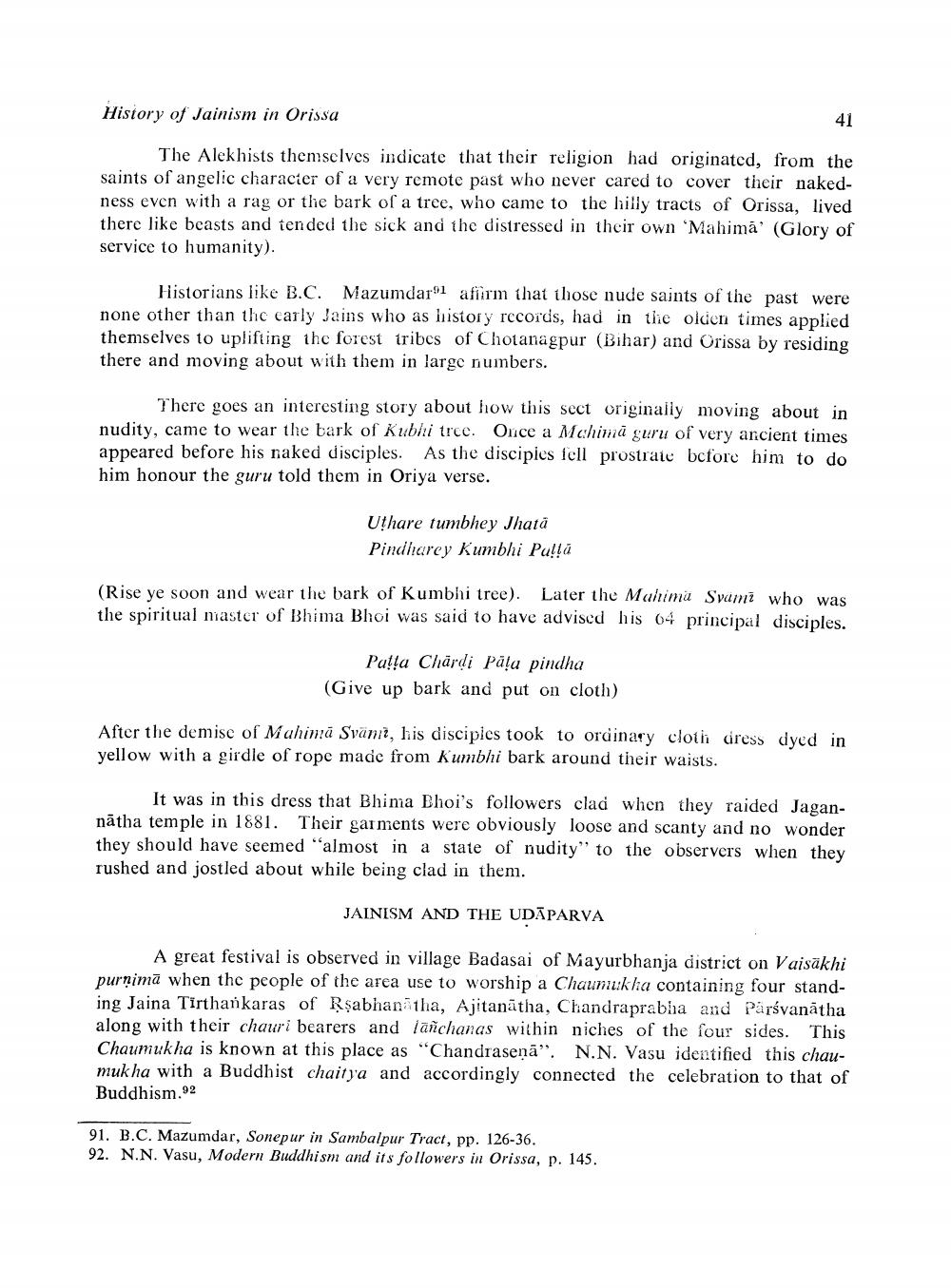________________
History of Jainism in Orissa
41
The Alekhists themselves indicate that their religion had originated, from the saints of angelic character of a very remote past who never cared to cover their nakedness even with a rag or the bark of a tree, who came to the hilly tracts of Orissa, lived there like beasts and tended the sick and the distressed in their own 'Mahima' (Glory of service to humanity).
Historians like B.C. Mazumdar affirm that those nude saints of the past were none other than the carly Jains who as history records, had in the olden times applied themselves to uplifting the forest tribes of Chotanagpur (Bihar) and Orissa by residing there and moving about with them in large numbers.
There goes an interesting story about how this sect originally moving about in nudity, came to wear the bark of Kubhi tree. Once a Mahima guru of very ancient times appeared before his naked disciples. As the discipies fell prostrate before him to do him honour the guru told them in Oriya verse.
Uthare tumbhey Jhata Pindharey Kumbhi Puṭṭā
(Rise ye soon and wear the bark of Kumbhi tree). Later the Mahima Svami who was the spiritual master of Bhima Bhoi was said to have advised his 64 principal disciples.
Puffa Chardi Pala pindha (Give up bark and put on cloth)
After the demise of Mahima Svänt, his disciples took to ordinary cloth dress dyed in yellow with a girdle of rope made from Kumbhi bark around their waists.
It was in this dress that Bhima Bhoi's followers clad when they raided Jagannatha temple in 1881. Their garments were obviously loose and scanty and no wonder they should have seemed "almost in a state of nudity" to the observers when they rushed and jostled about while being clad in them.
JAINISM AND THE UDAPARVA
A great festival is observed in village Badasai of Mayurbhanja district on Vaisakhi purnima when the people of the area use to worship a Chaumukha containing four standing Jaina Tirthankaras of Rsabhan tha, Ajitanatha, Chandraprabha and Parivanatha along with their chauri bearers and lanchanas within niches of the four sides. This Chaumukha is known at this place as "Chandrasena". N.N. Vasu identified this chaumukha with a Buddhist chaitya and accordingly connected the celebration to that of Buddhism.92
91. B.C. Mazumdar, Sonepur in Sambalpur Tract, pp. 126-36.
92. N.N. Vasu, Modern Buddhism and its followers in Orissa, p. 145.




